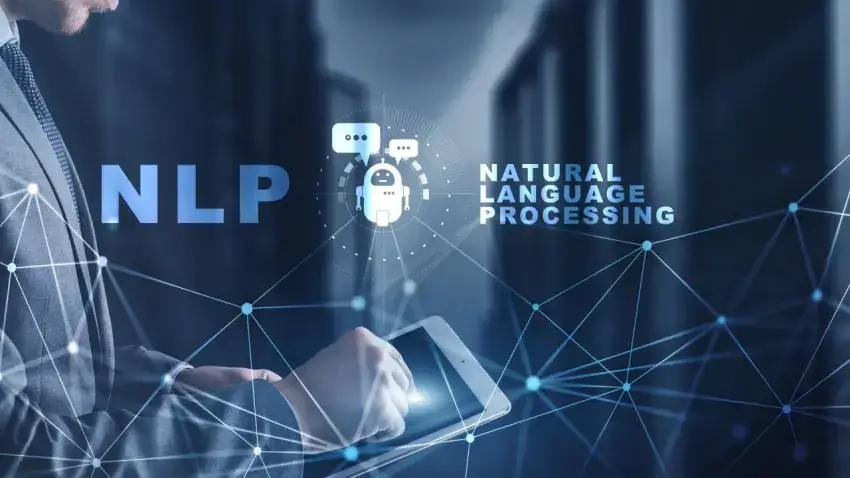In the rapidly evolving landscape of artificial intelligence (AI), Natural Language Processing (NLP) stands out as a cornerstone technology that is propelling AI to new heights. NLP focuses on bridging the gap between human language and computer understanding, allowing machines to interact with and understand human language in a way that was once considered science fiction. In this article, we’ll explore the vital role of NLP in advancing artificial intelligence, the challenges it faces, and the remarkable possibilities it unlocks.
Understanding Natural Language Processing (NLP)
NLP is a sub-field of AI that deals with the interaction between computers and human language. Its primary goal is to enable machines to understand, interpret, and generate human language in a valuable way. This includes tasks such as:
- Text Analysis: Extracting meaningful information from written or spoken language.
- Language Generation: Producing coherent and contextually relevant text.
- Sentiment Analysis: Determining the sentiment or emotion conveyed in the text.
- Speech Recognition: Converting spoken language into text.
- Language Translation: Translating text from one language to another.
The Power of NLP in AI Advancement
1. Enhanced Human-Machine Interaction
NLP has revolutionized how humans interact with machines. Voice assistants like Siri, Alexa, and Google Assistant have become integral parts of our lives, thanks to NLP. These systems can understand and respond to spoken commands, making human-machine communication more natural and efficient.
2. Text Understanding and Contextual Analysis
NLP enables machines to understand the context and nuances of human language. This capability is vital for tasks like chatbots, sentiment analysis, and content recommendation systems. For example, NLP-powered chatbots can engage in meaningful conversations and provide assistance in various domains.
3. Multilingual Capabilities
NLP has broken down language barriers. Translation services like Google Translate use NLP techniques to provide instant translations between numerous languages. This has profound implications for global communication, business, and collaboration.
4. Healthcare Advancements
NLP is transforming healthcare by making it easier to extract valuable insights from medical records and research papers. It helps in diagnosing diseases, identifying trends, and improving patient care through data analysis.
5. Personalization and Recommendations
Many online platforms use NLP to analyze user behaviour and preferences. This data-driven personalization enhances user experiences by providing tailored content, product recommendations, and search results.
6. Content Generation
NLP models like GPT-3 (Generative Pre-trained Transformer 3) can generate human-like text. They are used for content creation, from writing news articles to generating code snippets. These models are also being explored for creative tasks like writing poetry and stories.
Challenges in NLP Advancements
While NLP has made remarkable progress, it faces several challenges:
1. Ambiguity and Context
Human language is inherently ambiguous, and context plays a crucial role in understanding meaning. NLP systems often struggle with homonyms, metaphors, and sarcasm.
2. Cultural and Linguistic Diversity
NLP models trained in one language or cultural context may not perform well in others. Achieving true linguistic diversity in NLP systems is a complex task.
3. Bias and Fairness
NLP models can inherit biases present in training data, leading to biased outputs. Efforts are ongoing to address bias and promote fairness in NLP applications.
4. Data Privacy and Security
NLP systems deal with sensitive information, raising concerns about data privacy and security. Protecting user data while providing valuable NLP services is a constant challenge.
The Future of NLP and AI
The future of NLP holds immense promise. Researchers and developers are continually pushing the boundaries of what NLP-powered AI can achieve. Some areas of active exploration include:
1. Conversational AI
Advancements in conversational AI aim to create chatbots and virtual assistants that can engage in complex and empathetic conversations, making them more valuable for customer support and companionship.
2. Language Models
Language models like GPT-4 and BERT (Bidirectional Encoder Representations from Transformers) are becoming more sophisticated, enabling better text generation, understanding, and summarization.
3. Explainability
Understanding how NLP models arrive at their decisions is crucial for transparency and trust. Efforts are underway to make AI more explainable and interpretable.
4. Cross-Domain Applications
NLP is extending its reach into diverse domains, from finance to education. It’s being used for content moderation, fraud detection, and even mental health support.
5. Ethical AI
The AI community is actively addressing ethical concerns related to NLP, including bias mitigation, fairness, and responsible data usage.
Conclusion: A Trans-formative Force
Natural Language Processing is the driving force behind the integration of artificial intelligence into our daily lives. It has enabled machines to understand and interact with us on a linguistic level, revolutionizing industries, enhancing user experiences, and opening doors to new possibilities. As NLP continues to advance, it brings us closer to a future where human-machine communication is seamless, empathetic, and trans-formative. It’s a journey marked by challenges and ethical considerations, but the destination holds the promise of a more connected and intelligent world. NLP is not just a tool; it’s a trans-formative force shaping the future of artificial intelligence.


